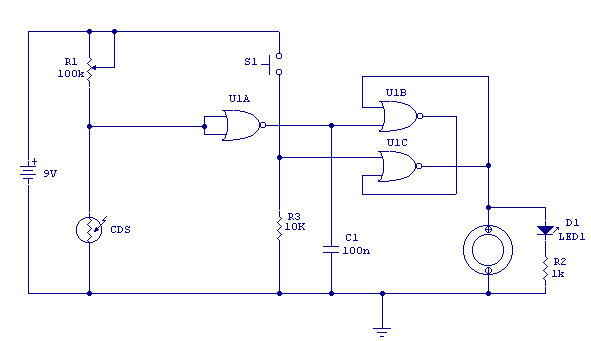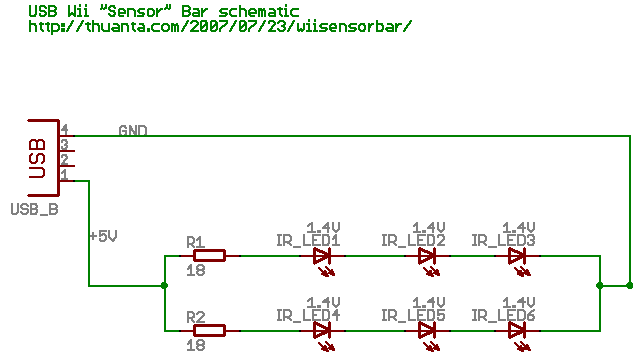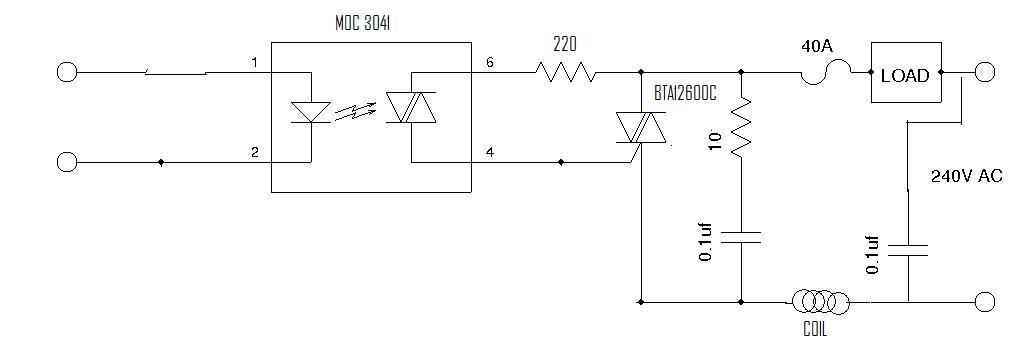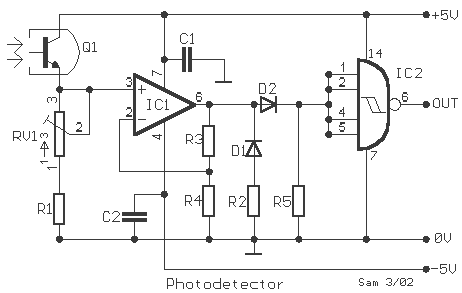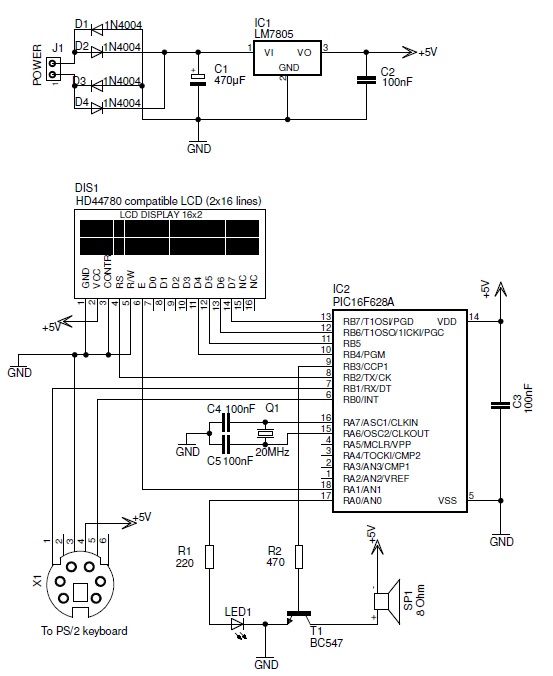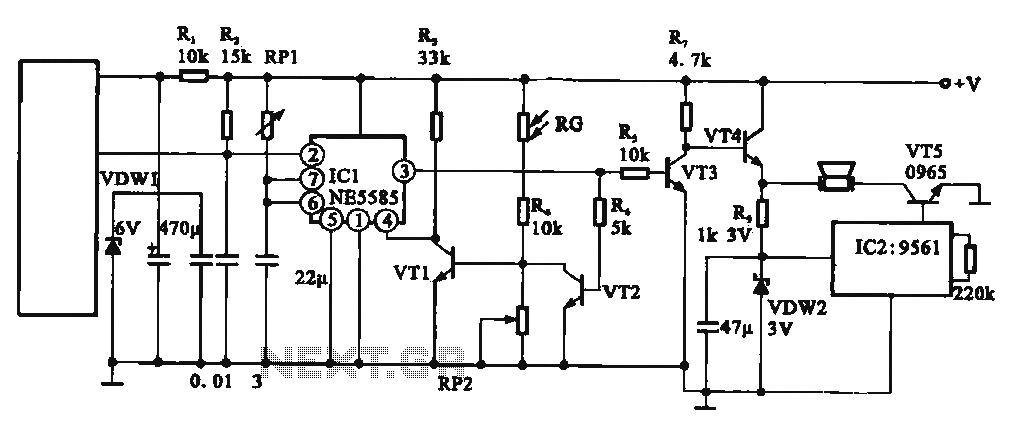
Battery charging indicator circuit
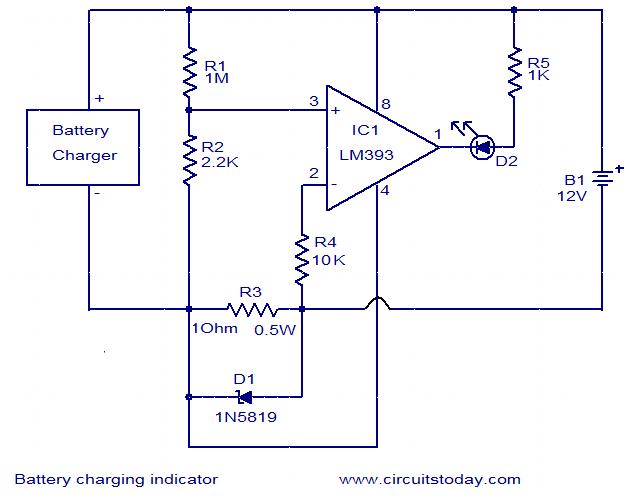
This simple circuit can be used to monitor whether a battery is charging. The voltage comparator IC LM393 is the core component of this circuit. The LED D1 will remain ON whenever there is at least 25 milliampere current flowing to the battery. This circuit is designed for a 12V battery with a charging current of less than 1A. By slightly modifying the component values, the charging current and voltage can be adjusted. The circuit does not sense the voltage level of the battery; for proper cutoff, a voltage-regulated power supply between 6.9 to 7 volts with a charging capability of 1 amp should be used. The circuit can be utilized with any battery up to 30 volts, and it can indicate charging status at trickle levels or simply when the battery is connected for charging.
The LM393 voltage comparator is employed to monitor the charging current flowing to the battery. When the current exceeds the threshold of 25 mA, the output of the LM393 changes state, turning ON the LED D1 to indicate that charging is occurring. This circuit is particularly suited for a 12V lead-acid battery, but can be adapted for other battery voltages by altering the resistor values accordingly.
For the resistor R1, a value of 220 kΩ is used, which allows the circuit to function effectively for the specified charging conditions. If a different diode is considered, such as the 1N5822, it is important to note that it is rated for a higher current capacity (3A) compared to the 1N5819 (1A), making it a suitable alternative without compromising circuit performance.
The circuit does not actively monitor the battery voltage level; thus, for a reliable cutoff mechanism, it is advised to use a regulated power supply that maintains the voltage between 6.9V and 7V. This ensures that the LED will turn OFF when the charging current falls below the threshold of 25 mA, indicating that the battery is fully charged.
The circuit is versatile, capable of working with batteries up to 30 volts, and can be adjusted to indicate charging status at various current levels. For example, at a lower voltage such as 6V for a 4.5Ah battery, the trickle charge current can be approximately 45 mA, and adjustments to resistor values may be necessary to achieve the desired cutoff and indication levels.
In summary, this circuit provides an effective means of monitoring battery charging status, adaptable to various battery types and voltages through careful selection of component values.This simple circuit can be used to monitor whether a battery is charging or not. The voltage comparator IC LM393 is the heart of this circuit. The LED D1 will remain ON whenever there is at least 25 milli ampere current flowing to the battery. This particular circuit is designed for a 12V battery with charging current less than 1A. By slightly modi fying the component values, the charging current and voltage can be modified. Dear sir, is it right to use 1N5822 diode instead of the one you have mentioned in your circuit (i. e1N5819). I am using 6v 4. 5ah SLA battery, will this circuit stop charging at 6. 9v or 7. 00v. i have used 220k for R1 and when the LED will go off, in this case it should go off at voltage level of 6. 9v or 7v. But i am doubtfull sir that it will not go off. please explain . Dear Bashir the indication will go off, when the charging current falls below 25mA. 1N5819 rated for 1 amp, will do but you can use the 3 Amp rating 1N5822 also. This circuit does not sense the voltage level of the battery. for a proper cut off use a voltage regulated power supply between 6. 9 to 7 volt with a charging capability of 1 amp. Hi Sugiman this can be used with any battery up to 30 volts. you can set the current such that it show up to trickle level or it can indicate just whenever the battery is connected for charging (called mandatory charge indicator) please go through my 19th July comment for calculation to use with other battery voltages.
ok tq mr. seetharaman. i`ll try to find the ic here. i on indonesia country. but, i have 2 more question. is the circuit will display the power status and charging stat until it full and is it work for 4 v batt thaks, Hi Praveena PD across R2 is 12 X (2. 2/1000) that is 26. 4mV. to get the same mV across 1 ohm you have to flow 26. 4mA. if you reduce the battery voltage to 6volt 4. 5AH the current for trickle is approx 45mA. hence 60mA is preferred value hence 60 X1 = 60mV. 60mV across 2. 2K hence for 6 volt it is 220k. (switching off of LED indicates battery is fully charged. if you want still indication even the charge is than trickle use say 25mA. then 25mV across 2. 2K for 6volt. 528K nearby preferred value is 510K. 🔗 External reference
The LM393 voltage comparator is employed to monitor the charging current flowing to the battery. When the current exceeds the threshold of 25 mA, the output of the LM393 changes state, turning ON the LED D1 to indicate that charging is occurring. This circuit is particularly suited for a 12V lead-acid battery, but can be adapted for other battery voltages by altering the resistor values accordingly.
For the resistor R1, a value of 220 kΩ is used, which allows the circuit to function effectively for the specified charging conditions. If a different diode is considered, such as the 1N5822, it is important to note that it is rated for a higher current capacity (3A) compared to the 1N5819 (1A), making it a suitable alternative without compromising circuit performance.
The circuit does not actively monitor the battery voltage level; thus, for a reliable cutoff mechanism, it is advised to use a regulated power supply that maintains the voltage between 6.9V and 7V. This ensures that the LED will turn OFF when the charging current falls below the threshold of 25 mA, indicating that the battery is fully charged.
The circuit is versatile, capable of working with batteries up to 30 volts, and can be adjusted to indicate charging status at various current levels. For example, at a lower voltage such as 6V for a 4.5Ah battery, the trickle charge current can be approximately 45 mA, and adjustments to resistor values may be necessary to achieve the desired cutoff and indication levels.
In summary, this circuit provides an effective means of monitoring battery charging status, adaptable to various battery types and voltages through careful selection of component values.This simple circuit can be used to monitor whether a battery is charging or not. The voltage comparator IC LM393 is the heart of this circuit. The LED D1 will remain ON whenever there is at least 25 milli ampere current flowing to the battery. This particular circuit is designed for a 12V battery with charging current less than 1A. By slightly modi fying the component values, the charging current and voltage can be modified. Dear sir, is it right to use 1N5822 diode instead of the one you have mentioned in your circuit (i. e1N5819). I am using 6v 4. 5ah SLA battery, will this circuit stop charging at 6. 9v or 7. 00v. i have used 220k for R1 and when the LED will go off, in this case it should go off at voltage level of 6. 9v or 7v. But i am doubtfull sir that it will not go off. please explain . Dear Bashir the indication will go off, when the charging current falls below 25mA. 1N5819 rated for 1 amp, will do but you can use the 3 Amp rating 1N5822 also. This circuit does not sense the voltage level of the battery. for a proper cut off use a voltage regulated power supply between 6. 9 to 7 volt with a charging capability of 1 amp. Hi Sugiman this can be used with any battery up to 30 volts. you can set the current such that it show up to trickle level or it can indicate just whenever the battery is connected for charging (called mandatory charge indicator) please go through my 19th July comment for calculation to use with other battery voltages.
ok tq mr. seetharaman. i`ll try to find the ic here. i on indonesia country. but, i have 2 more question. is the circuit will display the power status and charging stat until it full and is it work for 4 v batt thaks, Hi Praveena PD across R2 is 12 X (2. 2/1000) that is 26. 4mV. to get the same mV across 1 ohm you have to flow 26. 4mA. if you reduce the battery voltage to 6volt 4. 5AH the current for trickle is approx 45mA. hence 60mA is preferred value hence 60 X1 = 60mV. 60mV across 2. 2K hence for 6 volt it is 220k. (switching off of LED indicates battery is fully charged. if you want still indication even the charge is than trickle use say 25mA. then 25mV across 2. 2K for 6volt. 528K nearby preferred value is 510K. 🔗 External reference
